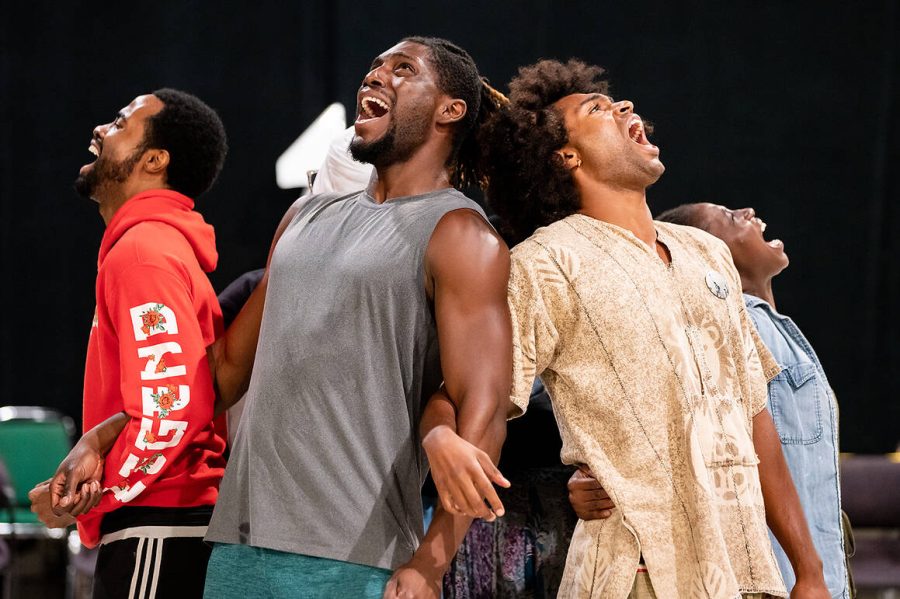Play adapts 1919 Chicago race riots with nuance
Steppenwolf Theatre
“1919” is a retelling of the events of The Red Summer being shown at the Steppenwolf Theatre. The play is adapted from a collection of poetry written by UChicago professor Eve L. Ewing.
October 24, 2022
On July 27, 1919, 17-year-old Eugene Williams drifted over an invisible line in the waters of Lake Michigan. The line segregated swimming areas along 29th Street Beach by race. His mistake cost him his life when he drowned after being hit by thrown rocks, a brutal act that started bloody riots across the city, which would later be called The Red Summer.
This influential part of Chicago history has been given a contemporary adaptation in a new production from the Steppenwolf for Young Adults Program: the play “1919,” which explores the history and impact of the Chicago race riots in an artistic way that doesn’t hold back from the difficult themes that come with the subject matter. The production was adapted from a collection of poetry by the same name written by Eve L. Ewing, a scholar and professor at the University of Chicago focused on racism, social inequality and urban policy.
The play begins with a minimalist staging of wooden boxes arranged throughout the stage with a typewriter atop one and empty chip bags strewn around it. The only other set piece, a chandelier of blue glass bottles, looms overhead. The main character, an unnamed young writer, is introduced and expresses that she is struggling from writer’s block, repeatedly saying “I have to write,” while eating from a bag of Flamin’ Hot Cheetos.
She is then greeted by five more characters, all dressed in colorful clothes — one even sporting roller skates — who influence her to return to her typewriter. They try to inspire her through lines that echo back to important events woven into Chicago’s history, like the CTA and Chicago Public Schools, and all reflect the poetic quality of the text the play is adapted from. The writer calls them “her muses” and gives them names like “the griever” and “the s— talker.” The writer then talks to her muses about a report she found while looking for content to write about, a report published in 1922 by then-Illinois Gov. Frank Lowden titled, “The Negro in Chicago: A Study of Race Relations and a Race Riot.”
The report was produced by a delegation of six white men and six Black men to serve as a post-mortem of the eight day-long race riots spurred by the murder of Eugene Williams that left 38 dead and hundreds more injured in the summer of 1919.
The writer and her muses later play the parts of sharecroppers, a cruel and popular practice throughout the South where many newly freed people who worked on the same land,lived in the same housing and made minimal wages. During the scene, the characters contemplate the back-breaking work they do and their dreams of relocating to Chicago, which hints at The Great Migration.
The ensemble then becomes characters conversing about the July 1995 heat wave, a deadly event that caused the deaths of 739 people mainly from Chicago’s poor and Black neighborhoods.
One of the final scenes of the play is spent remembering Emmett Till, a Black boy from Chicago, who was lynched by a gang of white men after he was incorrectly accused of catcalling a white woman in Mississippi in 1955. The chorus reflects on Emmett’s characteristic hat, by which the whole neighborhood knew him, and the memory of him in a grocery store quietly whistling to himself while eating a plum.
The play is a beautiful representation of an important yet commonly overlooked aspect of Chicago history. Told through a poetic and creative lens that captivates the audience, the Steppenwolf production forces viewers to reflect well after they leave the theater.
Performances will run through Oct. 29, but there will be a five-show tour Nov. 1-5 for youth throughout the city in neighborhoods including Bronzeville and South Shore.




























































